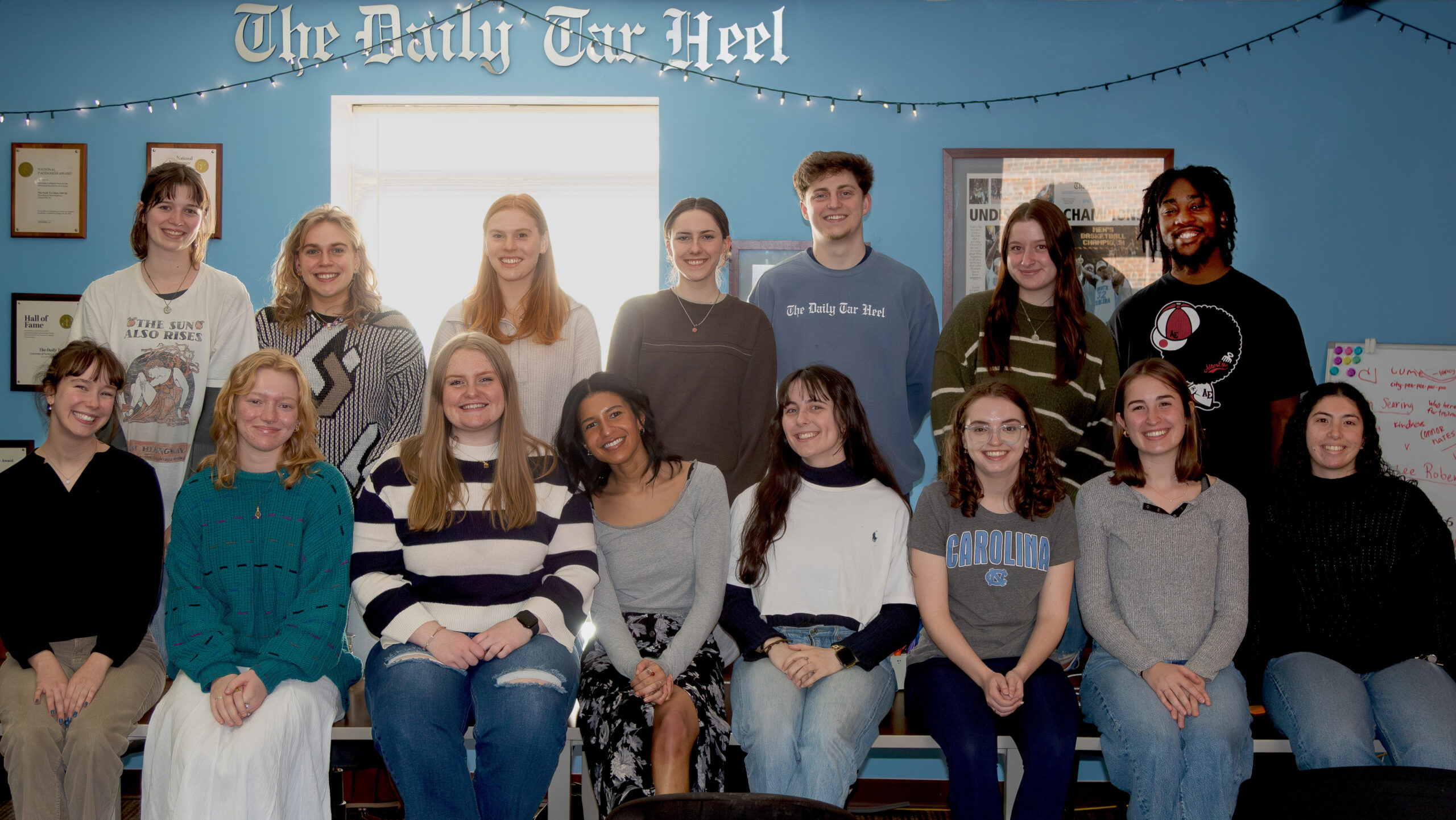
The staff of The Daily Tar Heel has covered everything from a fatal shooting and lockdown on campus to a decline in enrollment in the local public schools to North Carolina’s efforts to reduce the cost of child care.
My college roommate gets her news from a talking fish on TikTok. And she’s not the only one.
The “Talking Fish News” has 325,000 followers, and it is one of many accounts playing off of the beloved SpongeBob SquarePants character who is a talking fish news anchor in the show. The account, which reports on politics and pop culture, highlights the continuing trend of younger generations wanting to receive their news from characters and sources that resonate with them.
Younger audiences have, for some time, been turning to influencers and internet personalities rather than traditional, legacy news outlets for coverage of politics and current events, like the conflict in Gaza. Fewer young people are relying on news outlets, with only 24% of 18- to 24-year-olds using news sites or apps, and more than 30% of adults under 30 getting their news regularly from TikTok.
But there are obvious detrimental effects of getting your news primarily from social media — misinformation and disinformation chief among them. In fact, a Pew Research study found that Americans who get political news primarily from social media tend to be less knowledgeable on elections and politics. As we get further into the 2024 primaries and deepfakes generated by artificial intelligence become more prevalent, getting news from social media will only become more fraught.
How can we get Gen Z, 40.8 million of whom will be eligible to vote in November of this year, the information they need to make informed decisions? One way to do that is to tap into the power of student journalists, who are adept at navigating the digital landscape and have a finger on the pulse of campus life.
Student journalists have been covering their campus communities and filling the local vacuum for years. Recently, they have been at the forefront of covering protests on their campuses and tensions within their administrations, and currently comprise nearly 10% of statehouse reporters across the country. In 2023, student reporters from the University of Florida broke news of $300,000 being spent on a pool for incoming university president and former U.S. Senator Ben Sasse. In Missouri, a student journalist at the University of Missouri did a deep dive into the lack of high-speed internet in rural parts of the state, which led to the passage of legislation to create the state’s rural broadband development fund. These instances are just a fraction of the local stories that student journalists broke; in fact, student reporters in statehouse roles produced over 1,000 stories for 1,200 media outlets in 2022.
For the 2024 election, for example, Teen Vogue has hired seven student journalists in battleground states to be election correspondents, and The Boston Globe recently partnered with American University student journalists to produce a video on issues important to young voters during the New Hampshire primary. And just a few weeks ago, Boston University students traveled to New Hampshire for the primary and used livestreams and social media takeovers to center young voters in their coverage.
“Our student correspondents program is an effort to prioritize their voices in this year’s electoral mess. Young people are constantly targeted by both parties, especially in swing states, during election years, and we know that our coverage will be more useful to our readers if it’s written by reporters who understand the circumstances they’re living in,” says Lex McMenamin, news and politics editor at Teen Vogue. (Disclaimer: I contribute to Teen Vogue’s tech coverage.)
We need more of this. More legacy news outlets should follow a similar model and partner with college newsrooms so that they can produce coverage on issues that center and include young voices. The New York Times, for example, could partner with student journalists from CUNY to provide more coverage aimed at younger voters. Or in Georgia, where 21 counties have no local news source — and 116 others have only one — The Spectator at Valdosta State and The West Georgian at the University of West Georgia could help expand The Atlanta Journal-Constitution’s election reporting. The same could be said for Texas, the second most populous state with over 20 counties lacking their own local newspaper. Student journalists in the University of Texas system could work with the Austin American-Statesman or the Houston Chronicle to better report on young voters in the state.
Universities and foundations should also support student newsrooms in their coverage by providing more funding and resources. During the 2020 election, the Solutions Journalism Network provided The Daily Tar Heel, the University of North Carolina at Chapel Hill’s student newspaper, with a grant focused on election reporting and young voters. The paper was able to reach readers through text messages, social media surveys and digital voter guides. That same year, North Carolina saw a 10% bump in youth voter turnout, according to Tufts researchers. As philanthropic organizations ramp up their support of local news organizations through initiatives like Press Forward, some of that money should go to student outlets, especially in election years when on-the-ground coverage is crucial to helping communities understand the stakes.
“I think it’s really important to have a balance, to offer a perspective from someone from an older generation who can speak to broader historical trends, but then also including the voice of young people who are on the ground, talking with their peers on a day to day basis or are feeling the firsthand impacts of whatever the issue may be, whether that’s gun violence or climate change, or just life affordability and the cost of rent, or reproductive health care access, you can go down the list,” says Rachel Janfaza, founder of The Up & Up, a newsletter that covers youth politics and Gen Z voters. “I think when you’re talking about how an issue impacts young people, it’s really important to make sure you’re actually including young people in the storytelling.”
Recognizing that younger voters historically participate at lower rates than other demographics, the role of student journalists is paramount in creating a more engaged and informed electorate. The proximity of student journalists to large groups of young voters, coupled with the ability to strategically use social media, positions student journalists as key to crafting compelling stories on issues young people care about. In my own experiences as a student journalist, I learn a lot about what matters the most to my peers just by going to club meetings, having classroom conversations, and observing demonstrations on campus. This, in turn, helps me write stories that are more relevant and tailored to my classmates and allows me to reach them better.
As the election unfolds, it is imperative to take note of the crucial role student journalists can play in shaping a more inclusive, informed, and participatory political discourse for the younger generation. News outlets can help by giving student reporters a seat at the table.


